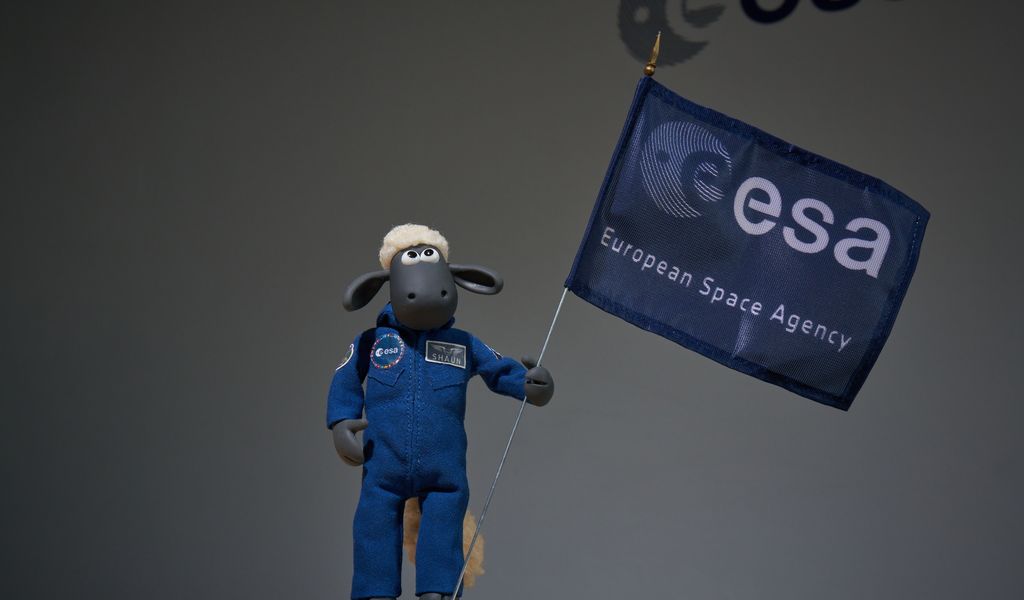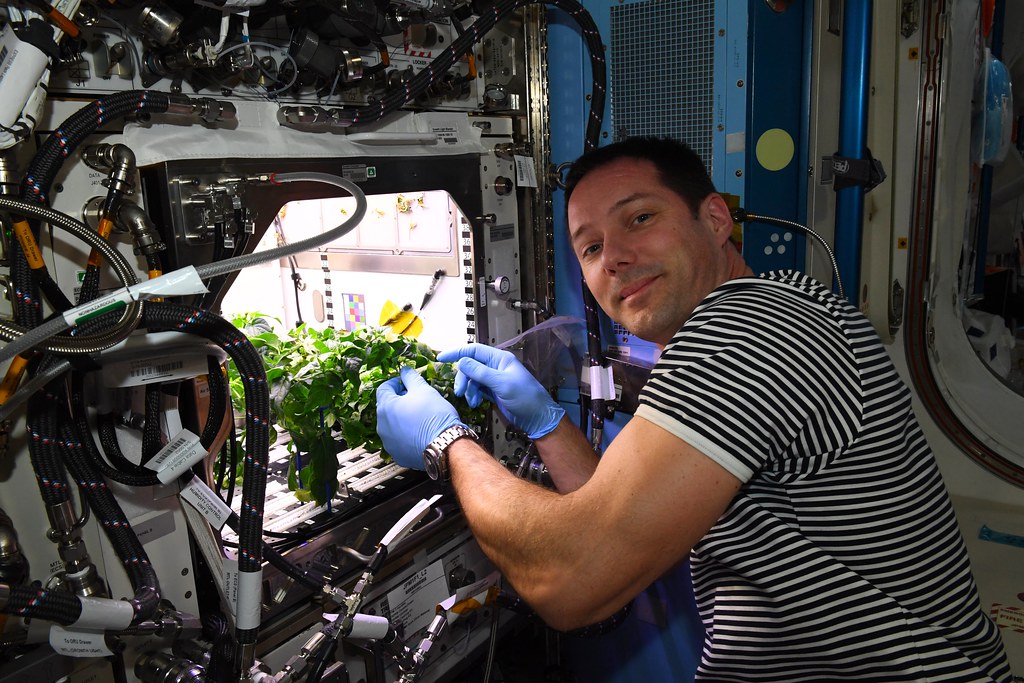The specially trained astronaut Shaun the Sheep has been assigned a seat on the Artemis I mission to the Moon. This series of ESA blog posts covers Shaun’s training and preparations leading up to launch.
There are many technical challenges when planning missions to the Moon and beyond, but maybe the most important question is: what should the astronauts (both human and sheep) have for dinner?
On 12 April 1961, Yuri Gagarin made history as the first human in space aboard his Russian Vostok spacecraft. He also became the first person to eat in space, squeezing meat paste from an aluminium tube into his mouth. For dessert he had chocolate sauce, eating it using the same method.
Astronauts on subsequent longer missions also consumed food items from tubes. These early experiences proved that humans could eat and swallow in ‘weightlessness’ with no ill effects, although the meals weren’t particularly appetising.
Nowadays, the food is much improved. It’s more tasty and visually appealing, as well as sticky and solid enough to consume in weightless conditions. Although crews on the International Space Station can eat food adapted to their individual tastes, it still must be specially packed and easy to store for long periods of time.
Diet plays an important role in maintaining physical and mental wellbeing, especially during long-duration missions on the Space Station. Astronauts exercise for at least two hours a day, six days a week, to combat muscle and bone loss caused by extended stays in microgravity, and they must eat specially prepared and nutritionally balanced meals.
An average astronaut will typically have three meals every day in space and is expected to consume around 2500-3000 calories per day. For ESA astronauts, two thirds of this calorie intake comes from the basic food supply that is preselected and prepacked by NASA for the entire space mission.
The final third of their calories comes from ‘crew choice meals’ – food that the astronauts choose for themselves, either from the US menu or a range of European, Russian and Japanese options.
The average sheep will consume 2-3% of their body weight in hay per day. But, of course, we know that Shaun is not the average sheep. Often seen grazing on the grass of Mossy Bottom Farm or the delights of fresh fruits and vegetables the farm has to offer, Shaun is also no stranger to having a little treat in his diet and likes to enjoy the occasional pizza with the rest of the Flock.
Luckily for Shaun, pizza has been a firm favourite of astronauts on the International Space Station for many years. The first pizza in space arrived on the Space Station on a resupply vehicle in 2001.
In 2017, ESA astronaut Paolo Nespoli casually mentioned that he missed one of his favourite foods, pizza. His support team on the ground decided to load all the necessary ingredients on the next resupply vehicle, allowing Nespoli and his crewmates to have an out-of-this-world pizza night!
You might notice that these pizzas use tortillas as the base. That’s because one item noticeably absent from these past space menus: bread. The story goes that in 1985, Mexican astronaut Rodolfo Neri Vela, who was on the Space Shuttle STS-61B mission, requested that tortillas be included in his food supply.
Once in orbit, his fellow crewmembers noticed that the tortillas, unlike regular bread, didn’t create crumbs and could be used to make sandwiches or hold other food items. Since that mission, tortillas have been a favourite of astronauts and are now standard fare on the Space Station, used to make breakfast burritos, hamburgers and, of course, pizza.
Water intake is also important and in a temperate environment, the usual recommendations are about 3-3.5 litres per day. There are four water tanks in the Orion spacecraft’s European Service Module. Sized to allow for long Artemis missions, these titanium tanks hold 240 litres of potable water that is pumped to the crew capsule as needed.
Fresh fruit and vegetables are the most difficult foods to provide for astronauts on long-duration missions. A limited supply of fresh fruit and vegetables regularly arrives with each visiting vehicle and is eagerly consumed by the crews. This is good news for Shaun, who knows the importance of a baaa-lanced diet.
Another option for fruit and veg, so far only tried on a very limited and experimental basis, is to grow your own. In 2013, after earlier trial runs that showed that eating lettuce grown in the Veggie NASA’s plant growth unit was safe to eat, astronauts declared the space-grown vegetable was delicious.
The ultimate goal, though, is to grow food aboard a spacecraft or in greenhouses on the Moon or Mars. A mission to Mars will take two to three years minimum, so with no resupply vehicles available to replenish astronaut provisions, food either needs to be well-packed with a long shelf life, or be grown in space.
One of ESA’s goals is to create a closed life-support system, including water recovery and food production, that will support astronauts in space indefinitely without costly supplies from Earth. This kind of technology could also be used to aid communities on Earth whose access to food, water or clean air is scarce.



 Automated Transfer Vehicle page
Automated Transfer Vehicle page ATV blog archive
ATV blog archive
Discussion: 3 comments
Shaun so excited to see pizza in space! I’ll be visiting Bristol in October and hope to find a cool esa shirt to bring back home! Good luck with your mission!
For ESA t-shirts the best place is to order online: https://www.esaspaceshop.com
Oh dear – am very worried about the state of Shaun’s nervous system. This all very concerning for his companions. I have some in the field next to me and have to keep them updated. I don’t suppose the humans are doing too well either. VERY IMPORTANT: has Shaun got enough grass to eat?? Will he have enough or will he have to be sent home ?